Arctic fox: Sneaks up unnoticed. Unique techniques of the polar fox that it uses to survive in the far north (13 photos)
Nobody was waiting for him, but he came. A survival specialist, a master of disguise, an ideal husband and the main robber of the north. The Arctic fox deserves to be talked about - so let's do that now. 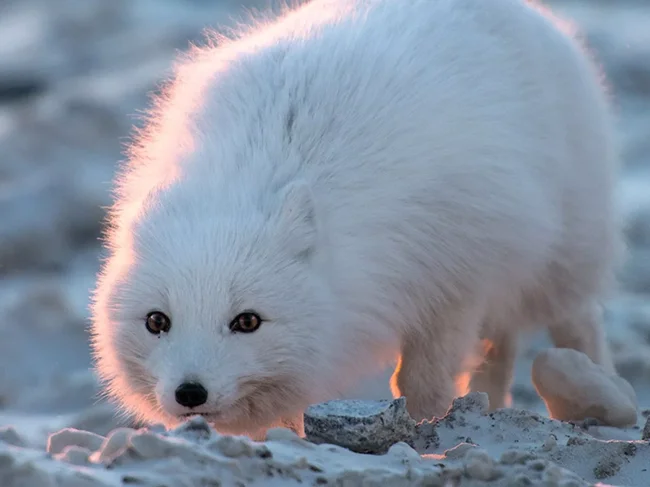
Arctic foxes live where there is tundra. More precisely, even this: wherever there is tundra, arctic foxes definitely live. Millions of years ago they chose this harsh region as their home and for this they were nicknamed “polar” or “Arctic foxes”. Despite the “fox” nickname, the arctic fox does not have much in common with its red sister: nature created it so that it could live without worries in extremely low temperatures. 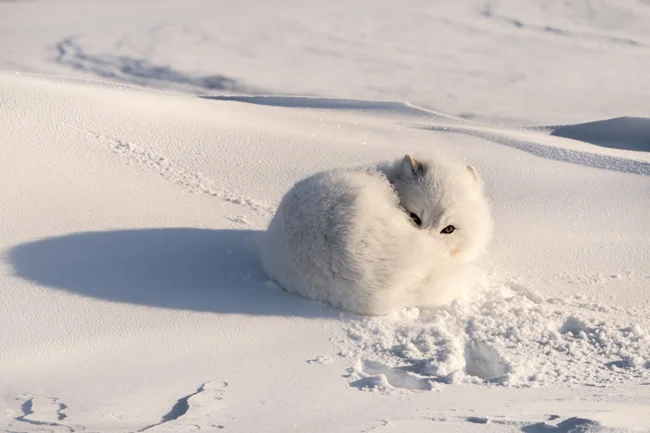
Have you ever seen anything more ideal in your life?
Look at the arctic fox. If it seems to you that he looks like a fluffy ball of ice cream, you don’t think so - the Arctic fox specifically strives for an ideal shape. Rounded shape reduces heat loss. Since summer, the Arctic fox begins to accumulate fat for winter, increasing its weight by more than 50%. This is both a reserve for times of famine and protection from severe frosts. Shortened paws, shortened round ears, a shortened nose also reduce the risk of frostbite - you understand the principle, right? 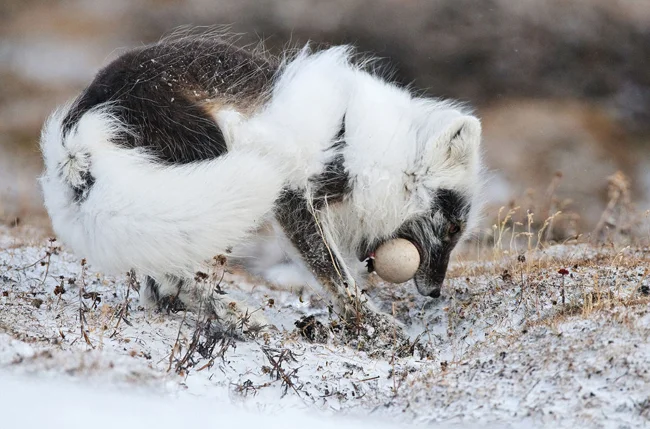
In addition, arctic foxes are able to speed up and slow down their metabolism, as well as regulate body temperature - even scientists do not fully understand how they manage to do this.
But, of course, the first thing that distinguishes an arctic fox from a fox is its luxurious snow-white fur coat. The Arctic fox has both winter and summer outfits. In the summer, he looks like a stubborn fox: an indistinct gray-brown-crimson color, thin fur and a lost look. 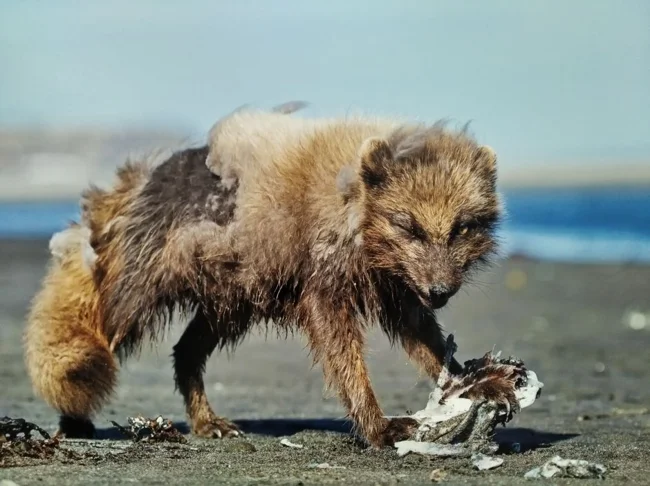
Yes, this shabby dog was once a snow-white lump of ice cream! And in the future too!
But when the arctic fox senses that “winter is coming,” he dons his magnificent white mantle. Of the entire huge family of dogs, only our hero has such a gift. That is why the arctic fox really sneaks up unnoticed - its color blends with both the riotous diversity of the spring tundra and the dazzling snow dunes. 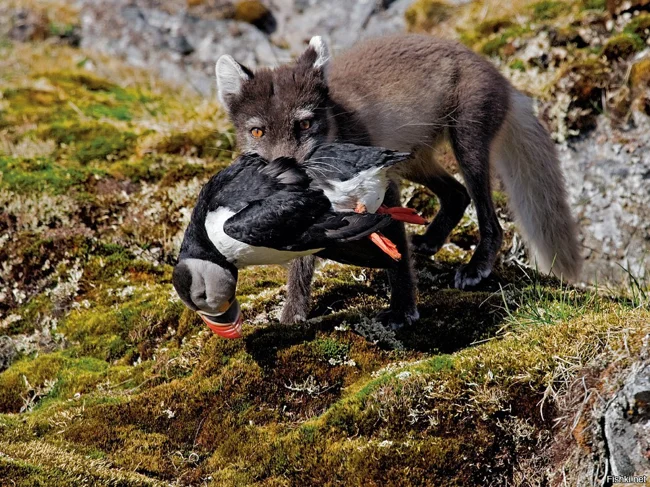
The Arctic fox has clearly outgrown his teenage desire to be “different from everyone else.” He tries as much as possible to merge with the brutal Arctic fauna. But it doesn't work. Most tundra predators are larger and stronger than the Arctic fox. To survive, the fox had to become practical and as picky about food as possible. Arctic foxes eat everything. I mean, everything in general. Meat, plants and berries, fish, rotten meat. And if there is no food, the animal is ready to travel 5000 kilometers to find it! Just imagine, walking the distance from Moscow to Yakutsk across the tundra! On foot! 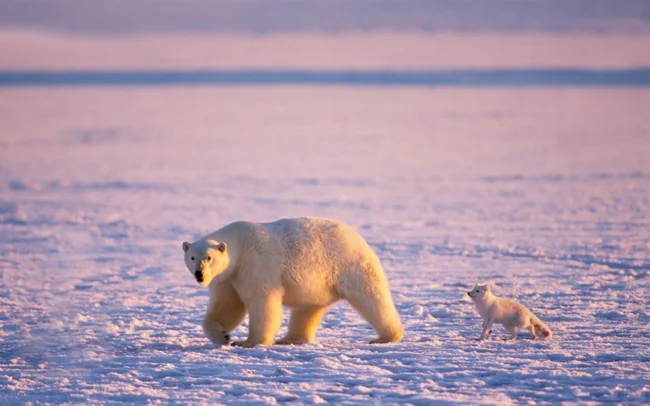
Arctic foxes do not hesitate to wander right behind polar bears in order to wait for the moment when they can snatch a piece of the predator’s lunch. And bears usually don’t mind.
When well-fed times come, the arctic fox prudently hides the leftover food in its burrows for the winter. Oh, these holes: the arctic fox could teach any young Minecrafter lessons in digging mines! 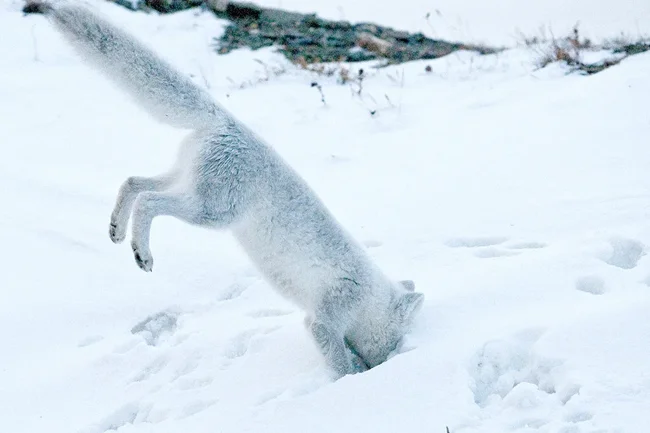
In the hills and hills, the hardworking arctic fox digs out real multi-level labyrinths with dozens of branches and passages/exits. One system of interconnected burrows can cover an area of more than 1000 square meters. m, and in depth such mines reach the very permafrost. 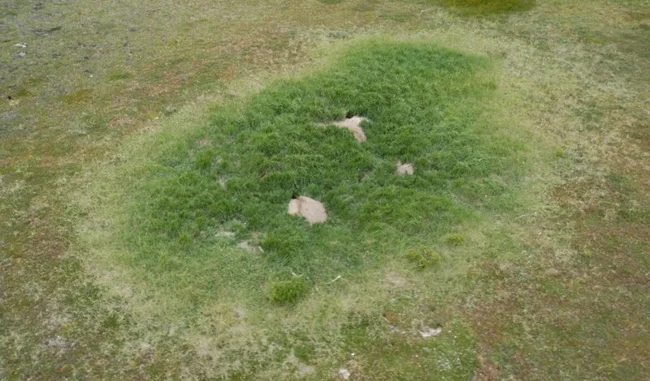
Such “buildings” are very clearly visible from above. Due to the constant loosening of the soil, with the arrival of spring, the shelters of arctic foxes turn green the fastest.
Only there are few favorable locations in the tundra, so the “fox-shrew” burrows have been used for decades, passing them on to their offspring. Scientists have found arctic fox labyrinths that are several hundred years old! And they are still used as housing by the grateful descendants of those workers who once dug them up. 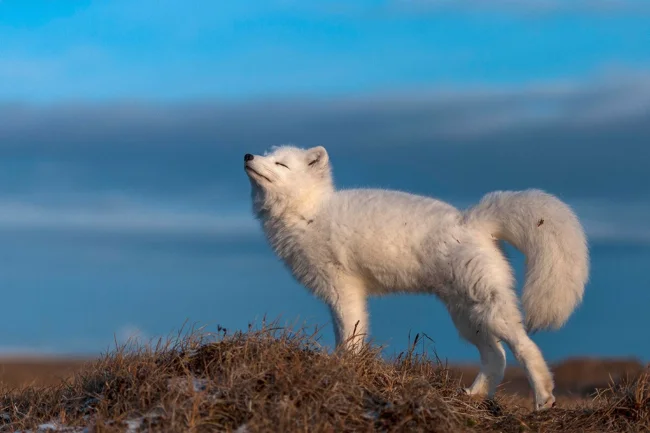
Now let's talk about the difficult fate of the male Arctic fox. In the spring, he begins to be interested in ladies, and he is looking for his one and only. It’s not easy at all to do this. First, he wins her heart in battle with other “suitors.” But if you emerge victorious from the fight, that doesn’t mean anything! The candy-bouquet period with courtship begins. 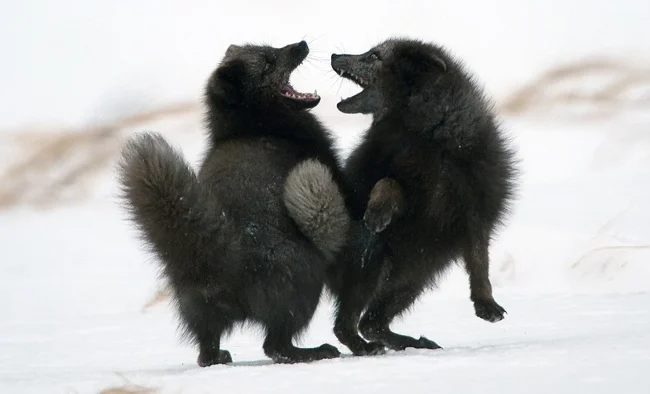
They are strange among arctic foxes. The guy must make all his tackles while holding something in his teeth: a stick, a lump of snow or ice. And only after these dances with a tambourine can you brag to the boys that you have a life partner. Do you think this is where the difficulties of life for a male end? No matter how it is! While the female is pregnant, she does not hunt. The gentleman takes all care of her entirely on his shoulders. 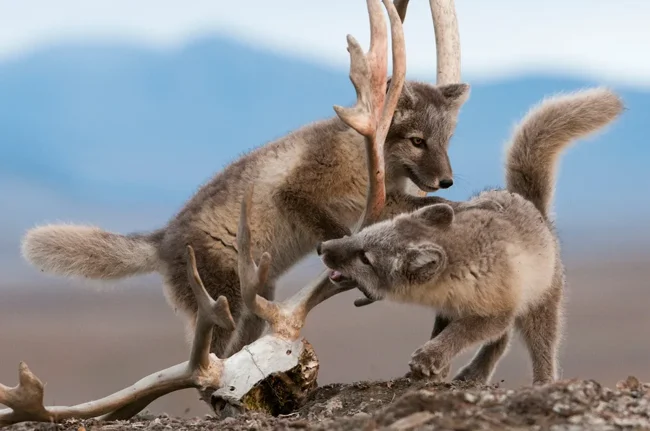
It will be difficult to feed a family: a female can give birth to up to 25 puppies at a time - this is the largest number of any carnivorous mammal on the planet. Such care for offspring and phenomenal birth rates are one of the main reasons why arctic foxes have not yet become extinct. 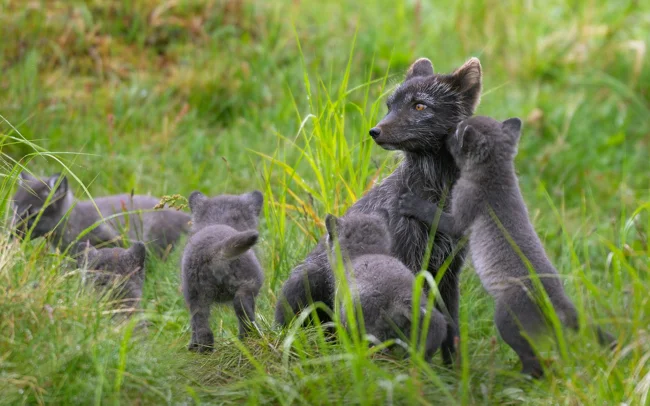
And arctic fox families very often “adopt” other people’s cubs, most often if they are left without parents - in this case, there can be more than 40 puppies in one family.
In this world, literally everything is against arctic foxes. In addition to hunger, cold and other delights of the Arctic, polar foxes have a lot of natural enemies: wolves, bears, wolverines, eagles, people - for each of them our hero is easy prey. Even their own relatives want to catch the Arctic fox in its native place! Due to global warming, ordinary foxes began to migrate en masse into the territory of polar foxes. They are larger and stronger than arctic foxes, so the latter have no other choice but to leave their homes and go into the alarming unknown. 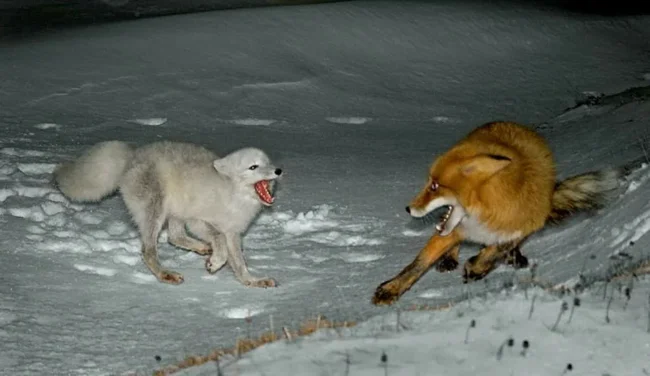
And so, when the last arctic fox dies, and centuries later the tundra becomes a flourishing land, a person will see that this entire vast land is covered with thousands of grandiose complexes of underground labyrinths. A modest fur-bearing animal will leave behind a great memory, a living fact of who was the real owner of the tundra.
